Do you have a question about the Panasonic Viera TH-L32C3K and is the answer not in the manual?
Details on trademarks and logos used in the manual, including HDMI, AVCHD, Dolby, DivX, QuickTime, SDXC, VIERA.
Sections covering safety, basic connection, identifying controls, and auto-tuning for quick setup.
Covers watching TV, teletext, external inputs, VIERA TOOLS, and advanced settings like child lock and media player.
Includes technical specs, FAQs, maintenance, and specifications for the TV.
Guidance on safe handling and connection of the power plug and lead to prevent hazards.
Instructions for safe power connection, installation, and avoiding foreign objects.
Precautions against rain, moisture, heat, and modifying the TV's internal components.
Advice on stable TV placement, using correct pedestals, and keeping small parts like SD cards from children.
Information on tropical climate use, cleaning, and unplugging the TV when not in use for extended periods.
Recommendations for adequate space around the TV for heat dissipation and ventilation.
Warnings against applying excessive force, impact, or listening to high volume headphones.
Details on auto power standby, keeping TV away from electronic equipment, and transport orientation.
Lists the items included with the TV, such as remote control and batteries.
Information on purchasing recommended optional accessories like wall-hanging brackets.
Guidelines and warnings for installing a wall-hanging bracket, including screw specifications.
Instructions for installing the cover sheet on the TV's pedestal area if wall-mounting.
Step-by-step guide on how to assemble and attach the TV pedestal securely.
Diagram showing input/output terminals on the rear of the TV for various connections.
Guidance on connecting the aerial for optimal reception and notes on cable placement.
Notes on connecting external devices like satellite dishes and set-top boxes.
Identification of physical buttons and indicators on the TV set itself.
Explanation of the functions assigned to the remote control buttons.
Explanation of how operation guides are displayed on the TV screen.
Detailed description of each button on the remote control and its function.
Step-by-step instructions for automatically searching and storing TV channels.
Guidance on selecting the viewing environment mode (Home or Shop).
Instructions on how to turn the TV on and select the TV mode.
Methods for selecting TV channels using the remote control or TV buttons.
How to set the TV to turn off automatically after a specified period.
Information shown on the screen, such as input mode, channel, and sound system.
Options to change current programme status like colour set, teletext character set, and MPX.
How to switch back to the previously viewed channel or input mode.
Guide to changing the image aspect ratio for optimal viewing size and aspect.
Instructions on how to change the language for on-screen displays.
Explanation of FASTEXT and List modes, and how to select and navigate teletext pages.
Details on using functions like HOLD for automatic updating and INDEX for main index.
How to watch TV and teletext simultaneously or use full screen modes.
Instructions for storing frequently viewed pages and viewing sub pages.
How to watch TV programmes while teletext information is being updated.
Steps to display and select the input mode for connected equipment.
How the selected input mode and its signal details are displayed.
How to display and select features using the VIERA TOOLS button.
Guidance on following the operations for each feature like Photo, Video, and Music modes.
Steps to access and navigate the main menu (Picture, Sound, Setup).
How to adjust or select options within the menus, including slide bars and alternatives.
Instructions for entering text or names using the on-screen keyboard or numeric buttons.
Detailed settings for Viewing Mode, Backlight, Contrast, Brightness, Colour, Sharpness, Tint, Colour Balance, etc.
Advanced adjustments for Gamma curves, White Balance, and 16:9 Overscan.
Settings for AV Colour System, Colour Matrix, and DVI Input adjustments.
Configurations for Sound Mode (Music, Speech, User), Bass, Treble, Equaliser, and Balance.
Adjustments for Headphone Volume, Surround Sound, Volume Control, and Auto Gain Control.
Settings for Speaker Distance, Multiplex Sound (MPX), and SPDIF audio output selection.
Configuration for HDMI input signals and PC input settings.
Settings related to PC connection, including Input Resolution, Clock, Sync, and PC Reset.
Settings for Off Timer, Eco Navigation, Child Lock, Channel List Edit, Auto Tuning, Manual Tuning, and OSD Language.
Options for Teletext, Input Labels, Banner Display Timeout, and Playing Time Display.
Configuration for VIERA Link, DivX VOD registration, Shipping Condition, Software Licence, and System Information.
Settings for Auto Standby and Power Save to manage power consumption.
Steps to display the menu and select tuning functions like Channel List Edit, Auto Tuning, Manual Tuning.
Instructions for initiating Auto Tuning using the buttons on the TV's side panel.
How to skip unwanted channels, reveal/hide channels, move positions, and rename channels.
Guide to starting and completing the automatic channel tuning process.
Steps for manually setting TV channels, including fine-tuning and colour system settings.
Instructions for entering a PIN and selecting channels or inputs to lock.
How to lock individual channels, all channels, or cancel existing locks.
Procedure for changing the existing Child Lock PIN number.
Steps to label or skip input terminals for easier identification and selection.
Instructions on how to enter custom names for input terminals.
Procedure to reset the TV to its original factory condition, including all settings.
Information on how to retune TV channels after performing a shipping condition reset.
Introduction to the Media Player function for photos, videos, and music on SD/USB devices.
Instructions on how to insert and remove SD cards and USB flash memory devices.
Steps to access the Media Player and select content type (Photo, Video, Music).
How to choose between Photo, Video, and Music modes within the Media Player.
Procedure to switch between connected devices within the Media Player.
How photos are displayed as thumbnails and options to change the display size.
Methods to sort photos by folder view, date, or month.
Instructions for viewing photos one by one (Single View) or in a slideshow.
Settings for slideshow effects, frame styles, colour effects, and background music.
Detailed configurations for photo display frames, colour effects, transition effects, and screen modes.
How video titles are displayed as thumbnails and how to view scenes within a title.
Instructions on selecting a title or scene and starting playback.
How to play video content starting from a selected scene to the end of the title.
Settings for video playback, including preview options and repeat playback settings.
How to confirm or change video status like multi-audio, subtitle, and aspect ratio.
Configuration for audio output via HDMI, including SPDIF selection.
Instructions for playing music files from folders or individual files.
Settings for music playback, such as repeat options.
Overview of features enabled by VIERA Link, such as channel download and easy playback.
Recommendations for connecting equipment like DIGA recorders, cameras, and amplifiers via HDMI.
Instructions for setting up VIERA Link and using features like channel download and easy playback.
Configuration for Power on Link, Power off Link, and Standby Power Save.
How to enable Intelligent Auto Standby to reduce power consumption of connected equipment.
Instructions on how to pause a live TV program and resume it later.
How to record the current TV program immediately using a connected DIGA Recorder.
How to operate connected equipment using the TV remote control via VIERA Link.
How to control theatre speakers or TV speakers using the VIERA Link function.
Instructions for enjoying multi-channel sound via an amplifier using HDMI and RCA cables.
Recommendations for connecting various equipment like VCRs, DVD players, cameras, and amplifiers.
Information about the HDMI terminal pin assignments and features.
Diagrams showing how to connect DVD recorders, VCRs, and other HDMI equipment.
Illustrations for connecting DVD players and home theater systems with amplifiers.
Diagrams for connecting USB devices, camcorders, game equipment, and PCs.
Instructions for connecting headphones and additional HDMI equipment.
A table showing channel allocations for different regions and broadcast systems.
Information on HDMI features, applicable signals, and DVI connection.
Details on connecting a PC, including supported scanning frequencies and signal types.
Table listing applicable input signals for Component and HDMI terminals.
Information on PC signal compatibility, including horizontal and vertical frequencies.
How to select sound output modes for stereo or bilingual broadcasts.
Information on supported card types (SDXC, SDHC) and USB flash memory formats.
Details on supported file formats for photos, videos (containers, codecs), and music.
Information on DivX Certified playback, subtitle file formats, and VOD registration.
Recommendations for connecting USB flash memory devices directly to the TV.
Solutions for common issues like noise, no image/sound, unusual display, and remote control problems.
Instructions for cleaning the TV's exterior surfaces with soft cloths.
Guidance on cleaning the mains plug to prevent fire or electrical shock hazards.
Details on power source, display panel, audio output, PC signals, and receiving systems.
Information on input/output terminals, compatibility, and connection types.
Space to record the product's model and serial number for warranty and identification purposes.
Details on trademarks and logos used in the manual, including HDMI, AVCHD, Dolby, DivX, QuickTime, SDXC, VIERA.
Sections covering safety, basic connection, identifying controls, and auto-tuning for quick setup.
Covers watching TV, teletext, external inputs, VIERA TOOLS, and advanced settings like child lock and media player.
Includes technical specs, FAQs, maintenance, and specifications for the TV.
Guidance on safe handling and connection of the power plug and lead to prevent hazards.
Instructions for safe power connection, installation, and avoiding foreign objects.
Precautions against rain, moisture, heat, and modifying the TV's internal components.
Advice on stable TV placement, using correct pedestals, and keeping small parts like SD cards from children.
Information on tropical climate use, cleaning, and unplugging the TV when not in use for extended periods.
Recommendations for adequate space around the TV for heat dissipation and ventilation.
Warnings against applying excessive force, impact, or listening to high volume headphones.
Details on auto power standby, keeping TV away from electronic equipment, and transport orientation.
Lists the items included with the TV, such as remote control and batteries.
Information on purchasing recommended optional accessories like wall-hanging brackets.
Guidelines and warnings for installing a wall-hanging bracket, including screw specifications.
Instructions for installing the cover sheet on the TV's pedestal area if wall-mounting.
Step-by-step guide on how to assemble and attach the TV pedestal securely.
Diagram showing input/output terminals on the rear of the TV for various connections.
Guidance on connecting the aerial for optimal reception and notes on cable placement.
Notes on connecting external devices like satellite dishes and set-top boxes.
Identification of physical buttons and indicators on the TV set itself.
Explanation of the functions assigned to the remote control buttons.
Explanation of how operation guides are displayed on the TV screen.
Detailed description of each button on the remote control and its function.
Step-by-step instructions for automatically searching and storing TV channels.
Guidance on selecting the viewing environment mode (Home or Shop).
Instructions on how to turn the TV on and select the TV mode.
Methods for selecting TV channels using the remote control or TV buttons.
How to set the TV to turn off automatically after a specified period.
Information shown on the screen, such as input mode, channel, and sound system.
Options to change current programme status like colour set, teletext character set, and MPX.
How to switch back to the previously viewed channel or input mode.
Guide to changing the image aspect ratio for optimal viewing size and aspect.
Instructions on how to change the language for on-screen displays.
Explanation of FASTEXT and List modes, and how to select and navigate teletext pages.
Details on using functions like HOLD for automatic updating and INDEX for main index.
How to watch TV and teletext simultaneously or use full screen modes.
Instructions for storing frequently viewed pages and viewing sub pages.
How to watch TV programmes while teletext information is being updated.
Steps to display and select the input mode for connected equipment.
How the selected input mode and its signal details are displayed.
How to display and select features using the VIERA TOOLS button.
Guidance on following the operations for each feature like Photo, Video, and Music modes.
Steps to access and navigate the main menu (Picture, Sound, Setup).
How to adjust or select options within the menus, including slide bars and alternatives.
Instructions for entering text or names using the on-screen keyboard or numeric buttons.
Detailed settings for Viewing Mode, Backlight, Contrast, Brightness, Colour, Sharpness, Tint, Colour Balance, etc.
Advanced adjustments for Gamma curves, White Balance, and 16:9 Overscan.
Settings for AV Colour System, Colour Matrix, and DVI Input adjustments.
Configurations for Sound Mode (Music, Speech, User), Bass, Treble, Equaliser, and Balance.
Adjustments for Headphone Volume, Surround Sound, Volume Control, and Auto Gain Control.
Settings for Speaker Distance, Multiplex Sound (MPX), and SPDIF audio output selection.
Configuration for HDMI input signals and PC input settings.
Settings related to PC connection, including Input Resolution, Clock, Sync, and PC Reset.
Settings for Off Timer, Eco Navigation, Child Lock, Channel List Edit, Auto Tuning, Manual Tuning, and OSD Language.
Options for Teletext, Input Labels, Banner Display Timeout, and Playing Time Display.
Configuration for VIERA Link, DivX VOD registration, Shipping Condition, Software Licence, and System Information.
Settings for Auto Standby and Power Save to manage power consumption.
Steps to display the menu and select tuning functions like Channel List Edit, Auto Tuning, Manual Tuning.
Instructions for initiating Auto Tuning using the buttons on the TV's side panel.
How to skip unwanted channels, reveal/hide channels, move positions, and rename channels.
Guide to starting and completing the automatic channel tuning process.
Steps for manually setting TV channels, including fine-tuning and colour system settings.
Instructions for entering a PIN and selecting channels or inputs to lock.
How to lock individual channels, all channels, or cancel existing locks.
Procedure for changing the existing Child Lock PIN number.
Steps to label or skip input terminals for easier identification and selection.
Instructions on how to enter custom names for input terminals.
Procedure to reset the TV to its original factory condition, including all settings.
Information on how to retune TV channels after performing a shipping condition reset.
Introduction to the Media Player function for photos, videos, and music on SD/USB devices.
Instructions on how to insert and remove SD cards and USB flash memory devices.
Steps to access the Media Player and select content type (Photo, Video, Music).
How to choose between Photo, Video, and Music modes within the Media Player.
Procedure to switch between connected devices within the Media Player.
How photos are displayed as thumbnails and options to change the display size.
Methods to sort photos by folder view, date, or month.
Instructions for viewing photos one by one (Single View) or in a slideshow.
Settings for slideshow effects, frame styles, colour effects, and background music.
Detailed configurations for photo display frames, colour effects, transition effects, and screen modes.
How video titles are displayed as thumbnails and how to view scenes within a title.
Instructions on selecting a title or scene and starting playback.
How to play video content starting from a selected scene to the end of the title.
Settings for video playback, including preview options and repeat playback settings.
How to confirm or change video status like multi-audio, subtitle, and aspect ratio.
Configuration for audio output via HDMI, including SPDIF selection.
Instructions for playing music files from folders or individual files.
Settings for music playback, such as repeat options.
Overview of features enabled by VIERA Link, such as channel download and easy playback.
Recommendations for connecting equipment like DIGA recorders, cameras, and amplifiers via HDMI.
Instructions for setting up VIERA Link and using features like channel download and easy playback.
Configuration for Power on Link, Power off Link, and Standby Power Save.
How to enable Intelligent Auto Standby to reduce power consumption of connected equipment.
Instructions on how to pause a live TV program and resume it later.
How to record the current TV program immediately using a connected DIGA Recorder.
How to operate connected equipment using the TV remote control via VIERA Link.
How to control theatre speakers or TV speakers using the VIERA Link function.
Instructions for enjoying multi-channel sound via an amplifier using HDMI and RCA cables.
Recommendations for connecting various equipment like VCRs, DVD players, cameras, and amplifiers.
Information about the HDMI terminal pin assignments and features.
Diagrams showing how to connect DVD recorders, VCRs, and other HDMI equipment.
Illustrations for connecting DVD players and home theater systems with amplifiers.
Diagrams for connecting USB devices, camcorders, game equipment, and PCs.
Instructions for connecting headphones and additional HDMI equipment.
A table showing channel allocations for different regions and broadcast systems.
Information on HDMI features, applicable signals, and DVI connection.
Details on connecting a PC, including supported scanning frequencies and signal types.
Table listing applicable input signals for Component and HDMI terminals.
Information on PC signal compatibility, including horizontal and vertical frequencies.
How to select sound output modes for stereo or bilingual broadcasts.
Information on supported card types (SDXC, SDHC) and USB flash memory formats.
Details on supported file formats for photos, videos (containers, codecs), and music.
Information on DivX Certified playback, subtitle file formats, and VOD registration.
Recommendations for connecting USB flash memory devices directly to the TV.
Solutions for common issues like noise, no image/sound, unusual display, and remote control problems.
Instructions for cleaning the TV's exterior surfaces with soft cloths.
Guidance on cleaning the mains plug to prevent fire or electrical shock hazards.
Details on power source, display panel, audio output, PC signals, and receiving systems.
Information on input/output terminals, compatibility, and connection types.
Space to record the product's model and serial number for warranty and identification purposes.


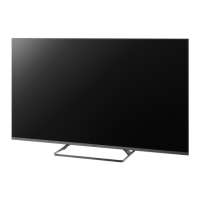
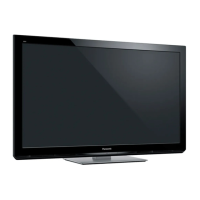
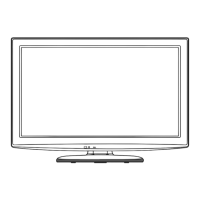
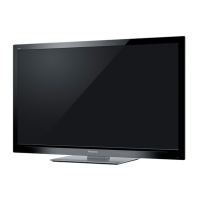
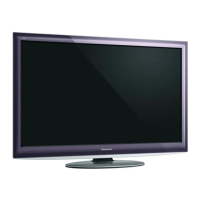
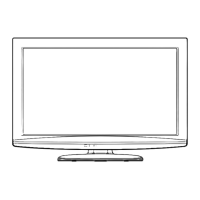
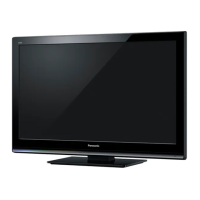
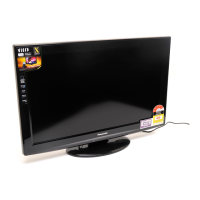
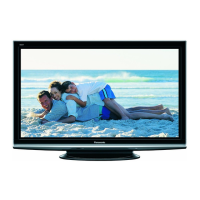
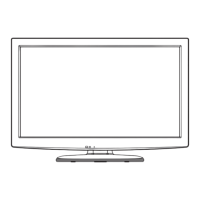
